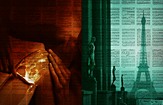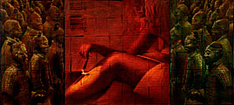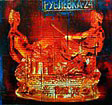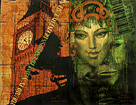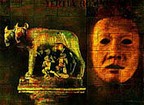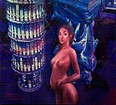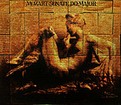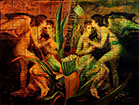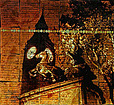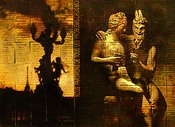THE ARTIST'S STATEMENT FOR THE SERIES"WAITING FOR THE BARBARIANS" - an exhibition at WINZAVOD centre for contemporary art Press release "Paris, a city of briefcases, gloves, braces, ... Oh Attila, when will you bring your four hundred thousand horsemen?" - today walking along the streets of Paris, London or Moscow I remember these words by a romantic author of XIX century. All our naive expectations for rebirth and "fresh blood" turned out to be a brutal prophecy of the XXI century - gloomy Attila faces appeared on the streets, Hannibal is already before the gates!" - this is how the author of the project, Boris Lavrentiev, tells about his personal show at Winzavod. "Waiting for the Barbarians" - it is a name of collected Brodsky’s poems, before that - a title of the novel by Nobel prize awarded writer Coetzee and a poem by Greek poet Cavafy. Even earlier the Roman Emperor Hadrian in anticipation of barbarian invasion pronounced these words speaking about erecting the fortification around Rome borders. "The title is metaphoric for every time has its own barbarians" - tells the author of the project - "I was precisely interested by a visual side - contradiction of olive and terracotta diptych parts, music score graphics, texture and plasticity of paint leakage and, first of all, the spirit and figurativeness of these works". Merely forgotten classical images revive in the author’s technique of printing on Mozart and Haydn scores followed by acrylic finishing. Twelve large-scale two-metres compositions are presented on the exhibition. Horace Vernet, Jacques-Louis David, Ingres - and next to them a double-headed Capitoline Wolf is licking her blood, ritual african and chinese masks appear... In Boris Lavrentiev’s paradoxal combinations many charismatic heroes alive in some unexpected perspective: Napoleon farewells his Guard not in Fontainebleau but in Beijing, on the Tiananmen square ("Farewell to the arms!"). Cupid and Psyhe mirror-like reflected twice are frozen rigorly and seem to be harkening to something while stenciled inscription "Hannibal ad portas!" breaks the idyllic landscape by a black vertical line. An African green phantom mask appears on the streets of London ("It is tea time" diptych). Leda plays erotic games with the swan and half goat Satyr talks to a youth so sweetly. Disunited, trying to doze one in his own way - through the graphics of printed music these rigid images are seen by contemporary Europeans, constrained with political correctness egocentric citizens of collapsed British Empire, French colonial system and lonely megalopolises of the Soviet Union. Is this the only thing they have left - elegantly or like obedient sacrificial animals watch the shadow of the barbarians on the threshold of their house? |

